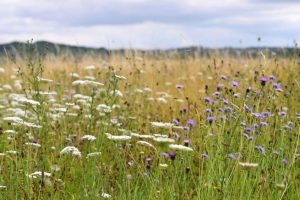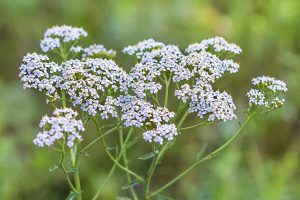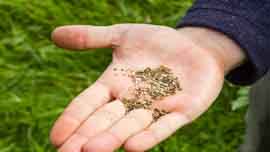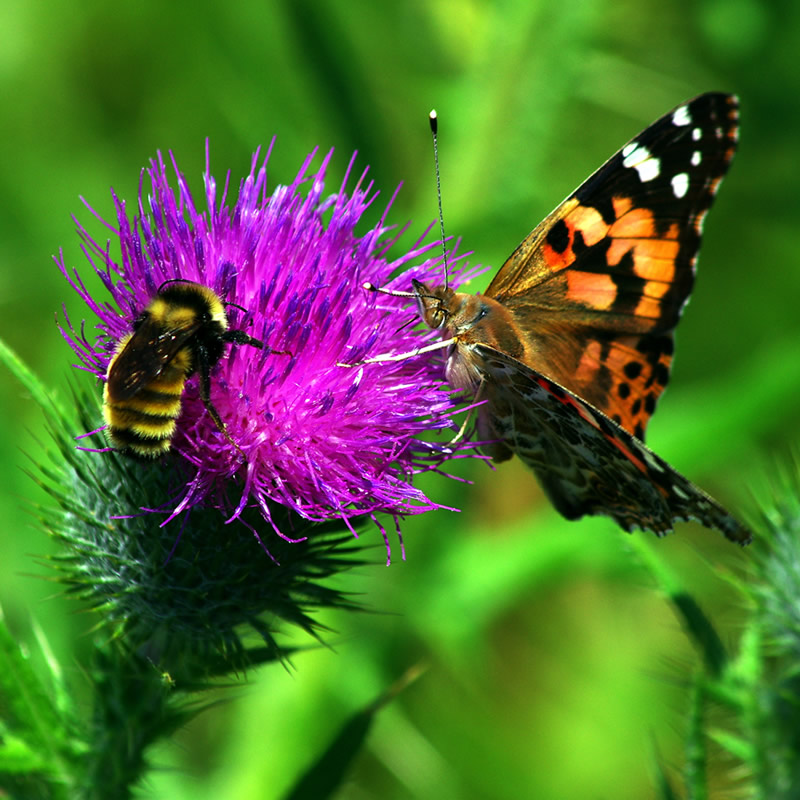Wildflower Seeds for Acidic Soils: A Guide to Thriving Blooms in Challenging Conditions
Many gardeners and landowners perceive acidic soil as a limitation, but with the right approach, it can be transformed into a haven for various stunning wildflowers. This comprehensive guide will equip you with the knowledge and techniques to cultivate a thriving wildflower meadow even in acidic soil conditions.
Understanding Acidic Soils and Their Challenges
What is Acidic Soil?
Soil pH measures acidity or alkalinity, ranging from 0 to 14. A pH of 7 is neutral, while values below 7 indicate acidity. Acidic soils are common in many parts of the UK, often resulting from factors like high rainfall, underlying geology, and the decomposition of organic matter.
How Soil pH Affects Plant Growth
Soil pH influences the availability of essential nutrients to plants. In acidic soils, nutrients like phosphorus, calcium, and magnesium may become less accessible, while others like aluminium and manganese can become more soluble, potentially reaching toxic levels for some plants. This can lead to stunted growth, yellowing leaves, and poor plant health.
Common Characteristics of Acidic Soil Areas
Acidic soil areas often exhibit specific traits:
- Presence of acid-loving plants: Thriving populations like rhododendrons, azaleas, camellias, and heathers suggest acidic conditions.7
- Slow decomposition: Organic matter tends to decompose more slowly in acidic soils, leading to a build-up of leaf litter.
- Certain soil types: Sandy or peaty soils are more prone to acidity.
The Importance of Choosing the Right Wildflower Seeds
Why Native Wildflowers are Ideal for Acidic Soil
Native British wildflowers have naturally adapted to the local climate and soil conditions, including acidity. They often possess mechanisms to thrive in nutrient-poor environments and tolerate higher aluminium levels.
Benefits of Wildflowers in Acidic Landscapes
- Low maintenance: Once established, wildflowers generally require less watering and fertilising than traditional garden plants.
- Tolerance to challenging conditions: Many wildflowers are well-suited to the specific challenges of acidic soils.
- Enhanced biodiversity: Wildflowers attract a wide range of pollinators and other beneficial wildlife, contributing to a healthy ecosystem.
Factors to Consider When Selecting Wildflower Species
- Soil pH: Choose species specifically known to tolerate or thrive in acidic conditions.
- Moisture levels: Consider the drainage of your soil and select species accordingly.
- Light conditions: Assess whether the planting area is sunny, shady, or partially shaded.
- Soil type: Determine if your soil is sandy, clay, or loam to guide your selection.
Top Wildflower Species for Acidic Soils
Best Wildflowers for Acidic Woodland Areas
- Foxglove (Digitalis purpurea): These stately biennials produce tall spikes of tubular flowers, beloved by bees.
- Red Campion (Silene dioica): A vibrant splash of colour with deep pink flowers.
- Wood Sorrel (Oxalis acetosella): Delicate white flowers that carpet woodland floors.
Vibrant Meadow Wildflowers for Acidic Conditions
- Common Poppy (Papaver rhoeas): A classic symbol of remembrance with bright red blooms.17
- Oxeye Daisy (Leucanthemum vulgare): Cheerful white daisies with yellow centres that attract various pollinators.
- Yarrow (Achillea millefolium): Clusters of feathery white or pink flowers that provide a landing platform for beneficial insects.


Shade-Loving Wildflowers for Acidic Soil Under Trees
- Bugle (Ajuga reptans): A ground-cover plant with spikes of blue flowers.
- Primrose (Primula vulgaris): Early spring blooms bring a cheerful touch to shady spots.
- Wood Anemone (Anemone nemorosa): Delicate white flowers that naturalise beautifully under deciduous trees.
Preparing Acidic Soil for Wildflower Planting
Testing and Adjusting Soil pH Levels
While many wildflowers tolerate acidic conditions, you can adjust the pH slightly if needed. If your soil is highly acidic (below 5.5), you can raise the pH by adding lime (calcium carbonate). However, it’s important to note that many wildflowers thrive in acidic environments, and excessive liming can be detrimental.
Enhancing Soil Health in Acidic Areas
Improving soil health is crucial for successful wildflower establishment. Incorporate plenty of organic matter, such as well-rotted compost or leaf mould, to improve drainage, aeration, and nutrient retention.
The Role of Mulch and Organic Matter
Mulching helps suppress weeds, conserve moisture, and regulate soil temperature. Use organic mulches like bark chippings or shredded leaves, which will gradually decompose and further enrich the soil.
How to Sow Wildflower Seeds in Acidic Soils
Step-by-Step Seed Planting Guide
- Prepare the planting area: Clear the area of weeds and debris.
- Improve the soil: Incorporate organic matter to enhance soil health.
- Sow the seeds: Scatter the seeds evenly over the prepared soil.
- Rake gently: Lightly rake the seeds into the soil surface.
- Water: Water the area gently but thoroughly.

Timing and Seasonal Considerations
The ideal time for sowing wildflower seeds is in the spring or autumn. Spring sowing allows plants to establish before the summer heat, while autumn sowing provides a more extended period for seedlings to develop before winter.
Tips for Maximising Germination in Acidic Environments
- Choose the right seed: Select species adapted to acidic soils.
- Provide good drainage: Ensure the soil is not waterlogged.
- Light and temperature: Follow each species’ specific light and temperature requirements.
Maintaining Wildflower Meadows in Acidic Soil Regions
Watering and Fertilizing Tips for Acidic Areas
Wildflowers generally require less watering and fertilising than traditional garden plants. Water young plants regularly until established, but reduce watering once they mature. Avoid excessive fertilisation, as it can encourage weed growth and harm wildflowers.
Controlling Weeds Without Damaging Wildflowers
Weeding can be challenging in wildflower meadows. Hand-pulling is often the best method, especially when plants are young. Avoid using herbicides, as they can harm wildflowers.
Long-Term Care for Sustainable Growth
- Mowing: Cut back the meadow once a year in late summer or autumn to prevent the dominance of aggressive species.
- Overseeding: Regularly introduce new seeds to maintain diversity and fill in gaps.
- Monitoring: Observe the meadow regularly to identify any issues and take corrective measures.
Benefits of Wildflower Meadows in Acidic Soils

Supporting Pollinators and Local Wildlife
Wildflower meadows provide essential food and habitat for pollinators, including bees, butterflies, and hoverflies. They also support other wildlife, such as birds, small mammals, and amphibians.
Improving Soil Quality Over Time
Wildflowers’ deep root systems help improve soil structure, aeration, and water infiltration. As plants decompose, they add organic matter to the soil, further enhancing its fertility.
Adding Beauty and Biodiversity to Your Landscape
Wildflower meadows bring a vibrant touch to any landscape. They offer a changing tapestry of colours and textures throughout the seasons, creating a haven for wildlife and a source of joy for those who behold them.
In conclusion, acidic soil presents a unique opportunity to cultivate a thriving wildflower meadow. By understanding the characteristics of acidic soils, selecting appropriate wildflower species, and following the proper planting and maintenance techniques, you can create a beautiful and biodiverse habitat that contributes to preserving the UK’s natural heritage.
Wildahome: Thriving Wildflowers, Even in Acidic Soil

At Wildahome, we understand the challenges and rewards of gardening with acidic soil.
We offer a curated selection of native British wildflower seeds and seed mats for acidic soils specifically adapted to thrive in these conditions.
Our mixes are carefully blended to create vibrant displays that support pollinators and enhance biodiversity, even in challenging environments. Whether you want to transform a garden, restore a meadow, or add a touch of wild beauty to your surroundings, we have the perfect solution for acidic soils.
Your Wildflower Meadow on Acidic Soil: Questions Answered: Frequently Asked Questions
- What are the best wildflower seeds for acidic soil in the UK?
Many beautiful native UK wildflowers thrive in acidic soil. Some top choices include:
- For sunny spots: Common Poppy, Oxeye Daisy, Cornflower, Bird’s-foot Trefoil
- For shady areas: Foxglove, Red Campion, Wood Sorrel, Bugle
- For damp ground: Meadowsweet, Purple Loosestrife, Ragged Robin
We offer a range of wildflower seed mixes formulated explicitly for acidic soils, ensuring you have a vibrant and successful wildflower meadow.
- Can I use wildflower seed mats on acidic soil?
Absolutely! Wildflower seed mats are an excellent choice for establishing wildflowers in acidic soil. They offer several advantages:
- Convenience: Roll out the mat and water – no need for back-breaking seed sowing.
- Weed suppression: The mat helps suppress weed growth, giving your wildflowers a head start.
- Erosion control: The mat helps to stabilise the soil and prevent erosion, especially on slopes.
Our wildflower seed mats are designed with various species suitable for acidic soils, ensuring a beautiful and diverse display.
- How do I prepare acidic soil for wildflower seeds or seed mats?
Preparing your soil correctly is crucial for successful wildflower establishment. Here are some key steps:
- Remove existing vegetation: Clear the area of weeds and grass.
- Improve drainage: If soil is heavy clay, add organic matter like compost.
- Don’t over-lime: While you can adjust pH slightly if needed, many wildflowers thrive in acidic conditions. Avoid excessive liming.
- When is the best time to sow wildflower seeds in acidic soil?
The ideal time to sow wildflower seeds in acidic soil is either in spring or autumn:
- Spring sowing (March-May): Allows plants to establish before the summer heat.
- Autumn sowing (September-October): Provides a more extended period for seedlings to develop before winter.
- Do wildflowers in acidic soil need fertiliser?
Generally, wildflowers in acidic soil require minimal fertilisation. Excessive fertilisation can encourage weed growth and harm wildflowers. Focus on improving soil health with organic matter before planting.
- How do I attract bees and butterflies to my acidic wildflower meadow?
Creating a haven for pollinators in your acidic wildflower meadow is easy! Here are some tips:
- Choose a variety of wildflowers: Include species with different flowering times and colours to attract a diverse range of pollinators.
- Provide shelter: Leave some areas of long grass and plant native shrubs or trees to offer shelter for pollinators.
- Avoid pesticides: Pesticides can harm pollinators, so opt for natural pest control methods.
- Where can I buy UK native wildflower seeds for acidic soil?
Look no further than Wildahome! We specialise in providing high-quality, locally sourced wildflower seeds and seed mats specifically formulated for acidic soils. Our mission is to help you create beautiful, biodiverse wildflower havens that support UK wildlife.


